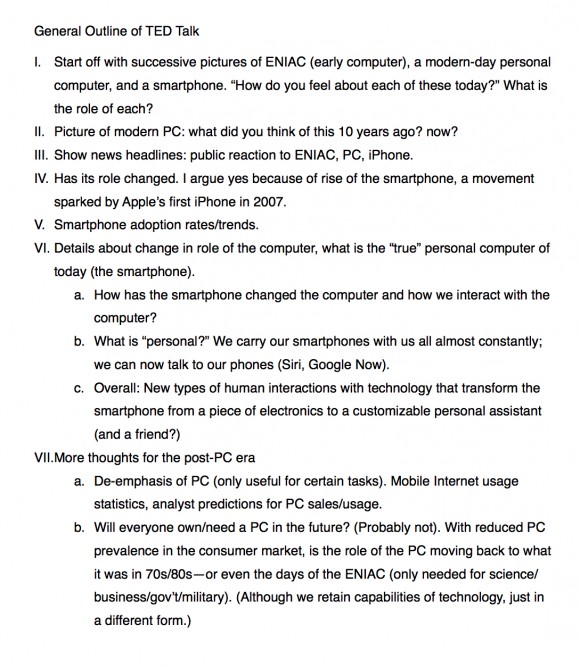Our multimedia project is starting to progress nicely. This week Austin and Mike set up in the HUB and in Atherton Hall to find students to interview about our topic: voting and the Electoral College. It turned out that while we were expecting to get short yes or no type answers that we could string together in our opening, we instead found that people who actually agreed to talk with us were willing to answer a few questions in more depth. We also did find a spectrum of opinions; there was no clearly defined opinion. This will be conducive to our project because we want to try to depict a variety of stances on our topic.
With the idea of rapid short-answer interview clips in the opening losing steam, we discussed possible alternatives. The option that we are currently pursuing strives to establish the exigence of our topic by first opening with scenes full of hordes of people—people coming out of buildings, walking through hallways and the HUB, and moving across Old Main (or other sites on campus). The idea is to speed up these video clips as a background for a voiceover that talks about how across the country, college campuses represent a large fraction of kids who have just recently come of voting age. We’ll talk about numbers of youth voters across the state and also about what the voter turnout rate is like for our age group. Today I went to the HUB and set up a tripod looking down on the main area of traffic within the HUB, capturing about 10 minutes of footage (which, sped up, will be about one minute). In addition to speeding up the clip to intensify the idea of thousands of students, we will also likely apply a video filter so that the clip appears a bit blurry and less sharp; this will help it play the role of a background behind the information presented by the voiceover.
Additionally, we have been emailing faculty about the possibility of interviewing them about our topic. We have scheduled one such interview for next Wednesday and hope to use it as an expert opinion in our video.
In our meeting today, Mike, Sounder, and I laid out some more framework and created an online survey. The results could possibly be used in text quotes during our video. Overall, there is a lot to do yet with laying out the film storyboard and actually putting together the film, but we are off to a good start.



Recent Comments